Nyceryx nictitans nictitans
Updated as per personal communication with Ezequiel Bustos (Shilap revta. lepid. 43 (172) diciembre, 2015, 615-631 eISSN 2340-4078 ISSN 0300-5267; Misiones,
Argentina), January 4, 2016
Updated as per personal communication with Anna and Frank West (Bahia, Brazil, September 1011); April 15, 2022
Updated as per BOLD and Jean Haxaire, April 15, 2022
Nyceryx nictitans
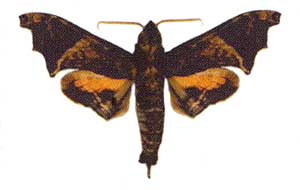
Nyceryx nictitans nictitans??, Peru, probably ssp saturata,
courtesy of Vladimir Izersky.
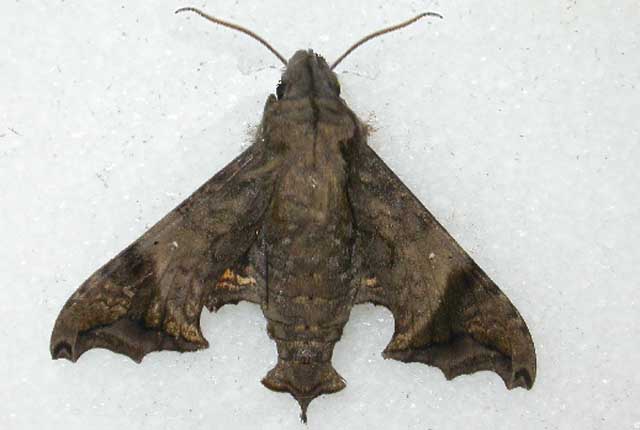
Nyceryx nictitans nictitans, Joinville, Parana, Brasil, courtesy of Jean Haxaire
This site has been created by Bill Oehlke.
Comments, suggestions and/or additional information are welcomed by Bill.
TAXONOMY:
Family: Sphingidae, Latreille, 1802
Subfamily: Macroglossinae, Harris, 1839
Tribe: Dilophonotini, Burmeister, 1878
Genus: Nyceryx Boisduval, [1875] ...........
Species: nictitans nictitans Boisduval, [1875]
|
DISTRIBUTION:
Nyceryx nictitans nictitans (wingspan: approximately 54-57mm)
flies from
eastern Brazil, the specimen type locality; from Bahia to Parana: Bahia, Sao Paulo, Santa Catarina, Parana, to
northeastern Argentina: Misiones.
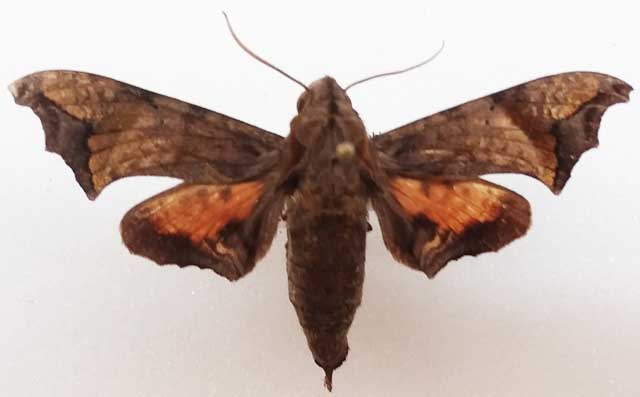
Nyceryx nictitans nictitans, 57mm, Instituto Uiracu, Camacan, Bahia, Brasil,
September, 2011, 800m, courtesy of Anna & Frank West
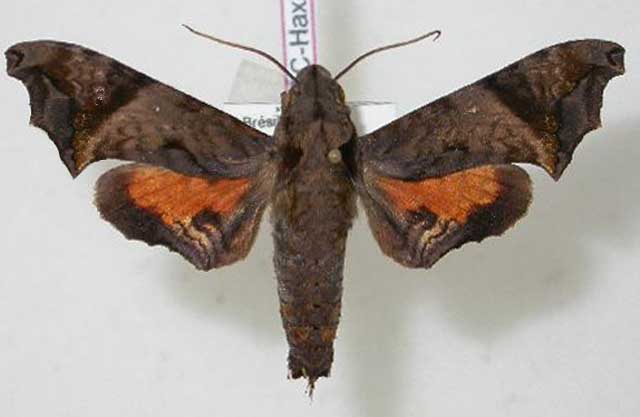
Nyceryx nictitans nictitans, 54mm, Parana, Brazil,
courtesy of Jean Haxaire
Immediately distinguished by the hindwing upperside, which has an orange base, a dark brown marginal band of even width as far as CuA2 and the lack of
semitransparent spots.
Underside of abdomen with two thin, black, but distinct lines, occasionally with a third line in the middle.
Forewing upperside with a minute discal spot that has a single white dot on its proximal side.
Hindwing upperside with basal area deep orange, with traces of transverse brown lines, a brown discal spot and a clearly defined outer edge; tornal
area blackish-brown, shaded with grey. CATE
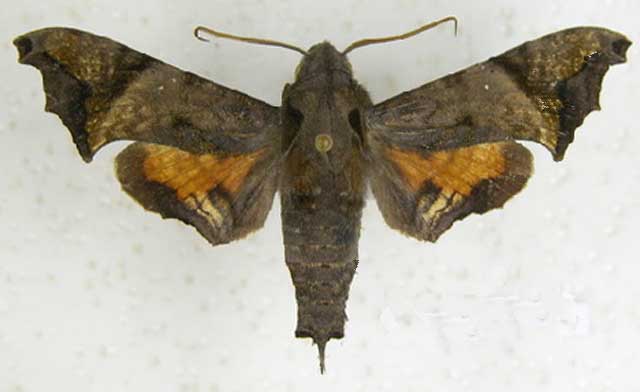
Nyceryx nictitans nictitans, Santo Antonio do Pinhal, Sao Paulo, Brazil,
courtesy of Jean Haxaire
FLIGHT TIMES:
Moths are probably on the wing in just about every month.
ECLOSION:
Adults eclose, usually within three weeks.
SCENTING AND MATING:
Females call in the males with a pheromone released from a gland at the tip of the abdomen.
EGGS, LARVAE, PUPAE:
Larvae feed on Aspidosperma macrocarpa
Return to Sphingidae Index
Return to Dilophonotini Tribe
Goto South American Index




